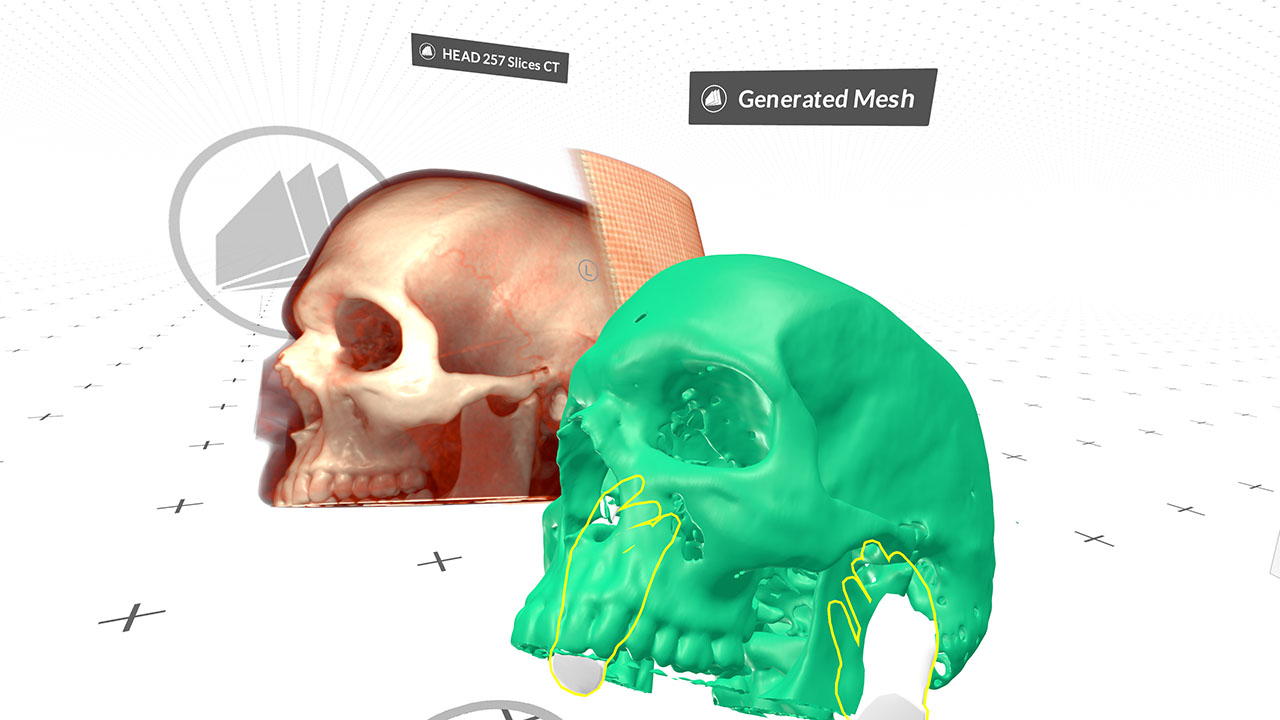
Exporting DICOM to STL in Virtual Reality is fast and easy. The 3D mesh is visualized next to the medical imaging, offering accurate insight into the exported file.
Intuitive and Easy-To-Use Workflow
With Medicalholodeck's intuitive DICOM to STL workflow, users can filter, crop, and exactly prepare their DICOM files in virtual reality before export. It takes just minutes to prepare a DICOM dataset that can then be exported as STL and used for 3D printing. The whole process happens in VR, showing the 3D mesh model side by side with the DICOM data.
Advantages of Data Preparation in Virtual Reality
Scaling, filtering, and cropping are all done in VR, in immersive space in real time. This workflow allows higher precision and fidelity than using computer screens. The possibility to scale 3D data to any size in VR offers new insights into medical data. Medicalholodecks mesh generating feature will help medical 3D printers to save time, be more efficient, and reach new quality levels.
What You See Is What You Get - in VR
With Medicalholodeck's new mesh generator, you can really see what you're getting. Not only is filtering and segmentation done quickly, but the STL file can also be smoothed and the number of polygons can be chosen. All adaptations on the DICOM file are shown in real-time on the 3D mesh next to it. VR's holographic view makes it easy to identify any problems with the data and make adjustments accordingly.
For PC VR and Remote Rendering
DICOM to STL export is offered on tethered PC VR and on Medicalholodeck's Cloud Rendering option. It is included in the PR and EDU licenses of Medicalholodeck's Medical Imaging XR app.
For more information, contact info@medicalholodeck.com October 2022